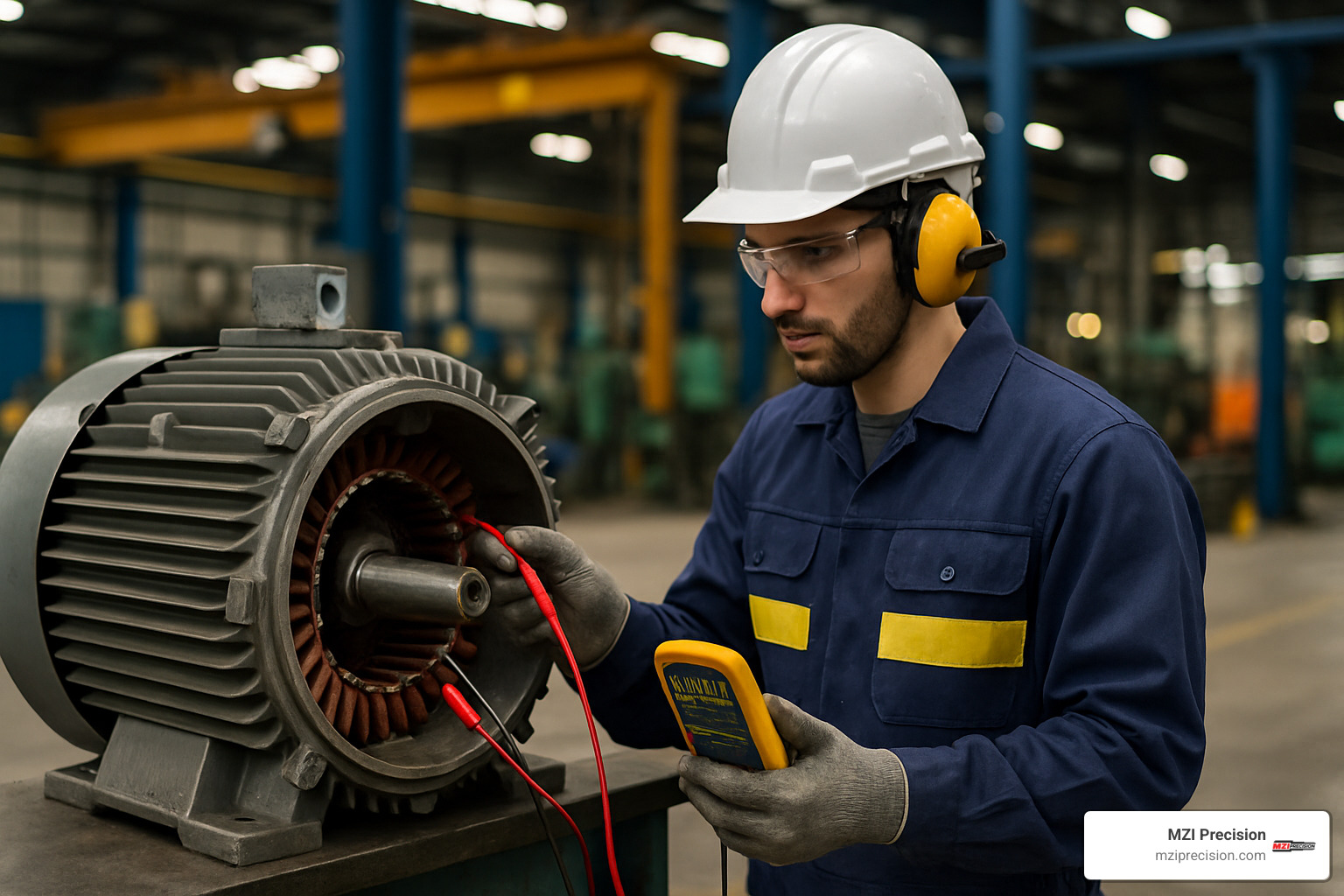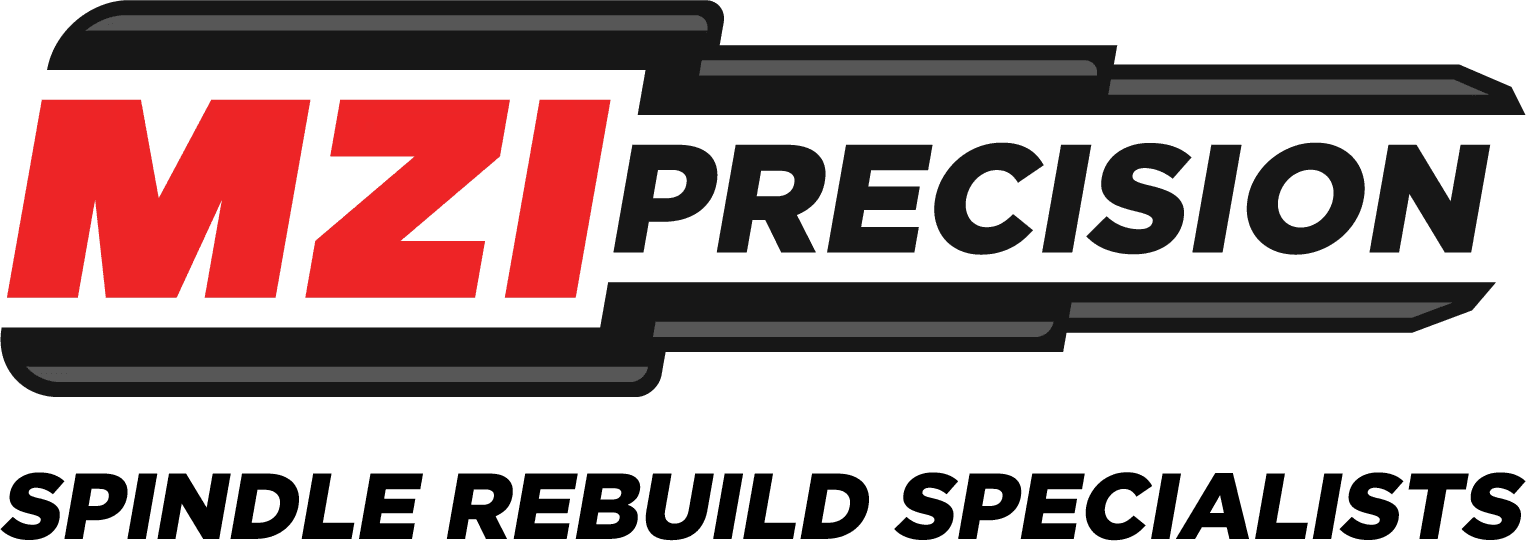Why Motor Reliability Matters to Your Operation
When your critical industrial motors fail, everything stops. Production lines halt, deadlines slip, and costs mount with alarming speed. The truth is, every minute of unexpected downtime can drain thousands from your bottom line. That’s why having a relationship with trusted motor rewind specialists isn’t just helpful—your operation’s survival.
Electric motor rewinding is a precise craft that breathes new life into damaged motors by replacing burnt or compromised wire coils. Rather than scrapping an entire motor and waiting weeks for a replacement, rewinding salvages the core components while renewing the vital electrical elements that make your equipment run.
“A properly planned and executed motor rewind will cause no efficiency loss in electric motors, and may even improve power density, reliability, and overall efficiency.”
Finding the right motor rewind specialists means looking for partners who combine hands-on experience with technical expertise. The best in the field maintain rigorous quality standards through ISO 9001:2015 certification and EASA membership, demonstrating their commitment to excellence. They’ll have comprehensive testing capabilities including surge and core loss testing, stand behind their work with solid warranties, and offer emergency services when you need them most.
According to industry data, choosing rewinding over replacement typically saves 40-60% in costs. Beyond the financial benefits, this approach dramatically reduces environmental impact by reusing substantial motor materials instead of manufacturing entirely new units. For manufacturing facilities where motors drive critical operations, this sustainable approach aligns with both business and environmental goals.
Experienced motor rewind specialists can handle everything from small AC motors to large industrial DC motors. Their expertise extends beyond simple rewinding to comprehensive motor health services that keep your operation humming along without costly surprises.
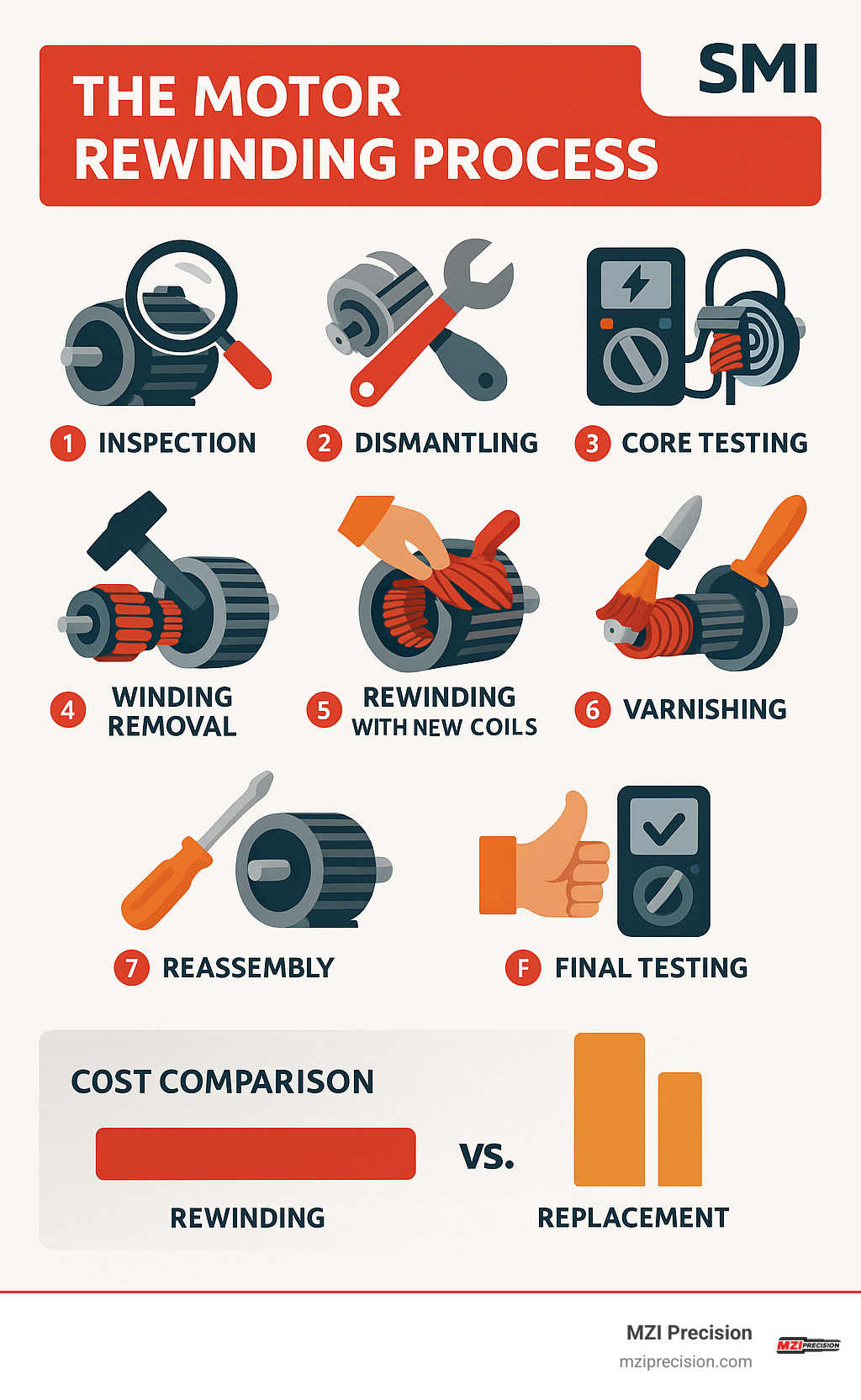
What Is Electric Motor Rewinding & Key Warning Signs
Electric motor rewinding breathes new life into damaged or burnt-out motors by replacing failed wire coils while preserving the motor’s critical core components. It’s a delicate balance of technical expertise and hands-on craftsmanship that saves businesses thousands in replacement costs.
As one industry expert puts it: “Motor rewinding is an art that is slowly disappearing. It requires precision, patience, and deep technical understanding of electromagnetic principles.”
Definition & Purpose
At its heart, motor rewinding focuses on the copper wire coils wrapped around a laminated steel core (the stator). These coils create magnetic fields when electricity flows through them, interacting with the rotor’s magnetic field to generate the rotational motion that powers your equipment.
These essential windings don’t last forever. They deteriorate over time due to electrical overloads, persistent overheating, moisture finding its way inside, mechanical damage, or simply the inevitable wear and tear of industrial use. When this happens, skilled motor rewind specialists carefully document the original winding pattern before removing damaged coils. They then craft new insulated wire coils matching the original specifications, restoring the motor’s magnetic flux and performance to factory standards.
7 Red Flags Your Motor Needs Attention
Catching motor problems early can save you from costly downtime and more extensive repairs. Here are seven warning signs that it’s time to call a motor rewind specialist:
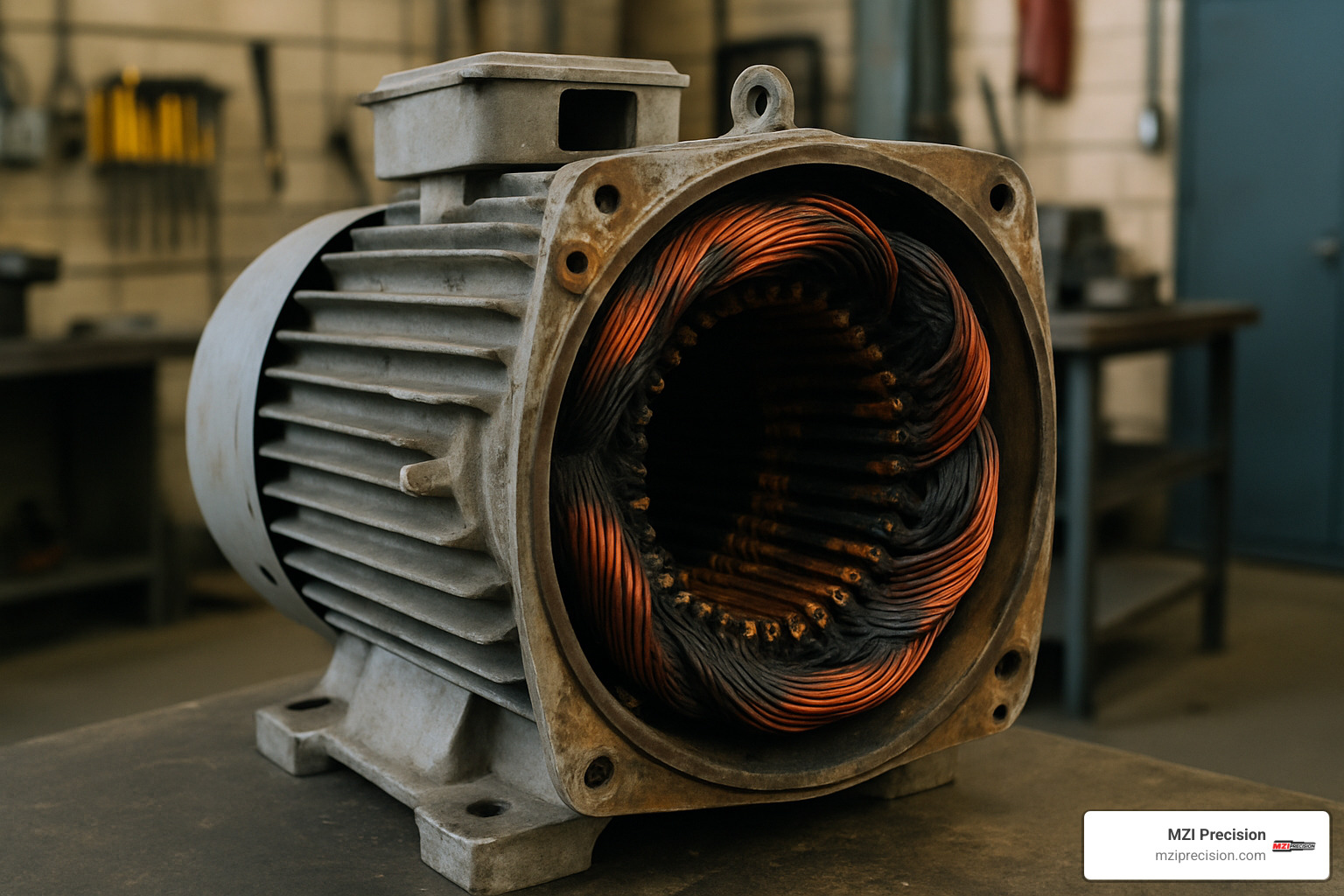
Overheating is perhaps the most common red flag—if your motor casing is too hot to touch (above 80°C/176°F) during normal operation, something’s wrong. Similarly, low megger readings from insulation resistance tests indicate deteriorating insulation that needs addressing before complete failure occurs.
Pay attention to unusual noises like humming, buzzing, or grinding that weren’t there before—your motor is literally crying out for help. An unexplained efficiency drop shown by increased power consumption for the same output is another telltale sign of winding issues.
Frequently tripped breakers during normal operation suggest electrical problems that need immediate attention. Visual inspection might reveal winding discoloration where darkened or burnt coil insulation indicates heat damage. Finally, evidence of moisture ingress—water or condensation inside the motor housing—can rapidly accelerate winding deterioration.
As industry experts with over a century of motor repair experience wisely note: “Early detection of winding issues through regular testing can prevent complete motor failure and significantly reduce downtime costs.”
Regular inspection by qualified technicians can catch these warning signs before catastrophic failure occurs. In industrial settings, prevention isn’t just better than cure—it’s substantially more affordable too.
Rewind vs Replace: Cost, Efficiency & Environmental Considerations
When your industrial motor fails, you’re faced with a critical decision: should you rewind it or replace it entirely? This choice impacts not just your immediate budget, but your long-term operational costs and environmental footprint as well.
Let’s take a practical look at both options to help you make the best decision for your operation.
When Rewinding Wins
Newer premium motors under 10 years old make excellent rewinding candidates. As one motor rewind specialist from a leading repair facility explains, “With modern motors, we can restore performance to like-new condition while saving customers nearly half the cost of replacement.”
Motors with intact stator cores are perfect for rewinding. When core testing shows minimal damage to the laminations, rewinding preserves the motor’s original efficiency. Contrary to outdated beliefs, properly executed rewinds cause virtually no efficiency loss in modern electric motors.
For motors with obsolete frame sizes or custom dimensions, rewinding often becomes the only practical solution. Replacing these motors might require expensive system modifications, custom adapters, or even rebuilding mounting structures—costs that far exceed a quality rewind.
The cost savings are substantial, particularly for larger motors. Rewinding typically costs 40-60% less than buying new. For perspective, a 100 HP motor might cost $12,000 new, while a professional rewind might run $5,000-$7,000. Those savings go straight to your bottom line.
The environmental benefits are equally compelling. Rewinding reuses the motor’s frame, stator core, rotor, and other major components. This significantly reduces the carbon footprint compared to manufacturing a completely new unit. For companies with sustainability goals, this factor alone can tip the scales toward rewinding.
When Replacement Makes Sense
Despite the benefits of rewinding, sometimes replacement is the smarter choice.
Motors with severe core damage revealed through core loss testing may never regain their original efficiency, even with pristine new windings. In these cases, the long-term energy costs of keeping an inefficient motor running will eventually outweigh the initial savings from rewinding.
Very old motors with obsolete efficiency ratings often benefit from replacement with modern, high-efficiency models. The energy savings from newer designs can create payback periods as short as 1-2 years for continuously running applications.
If your motor has experienced chronic overload conditions where it’s consistently operated beyond its design capacity, a larger replacement unit may be necessary to prevent recurring failures. No amount of rewinding can increase a motor’s fundamental power rating.
For small standard motors under 5 HP, the economics have shifted in recent years. Mass production has narrowed the cost gap between rewinding and replacement for these smaller units, sometimes making new motors more economical when labor costs are considered.
As a veteran industry expert points out: “A properly executed rewind delivers the same reliability and efficiency as a new motor at a fraction of the cost. But every situation is unique—we analyze the motor’s condition, age, and application before making recommendations.”
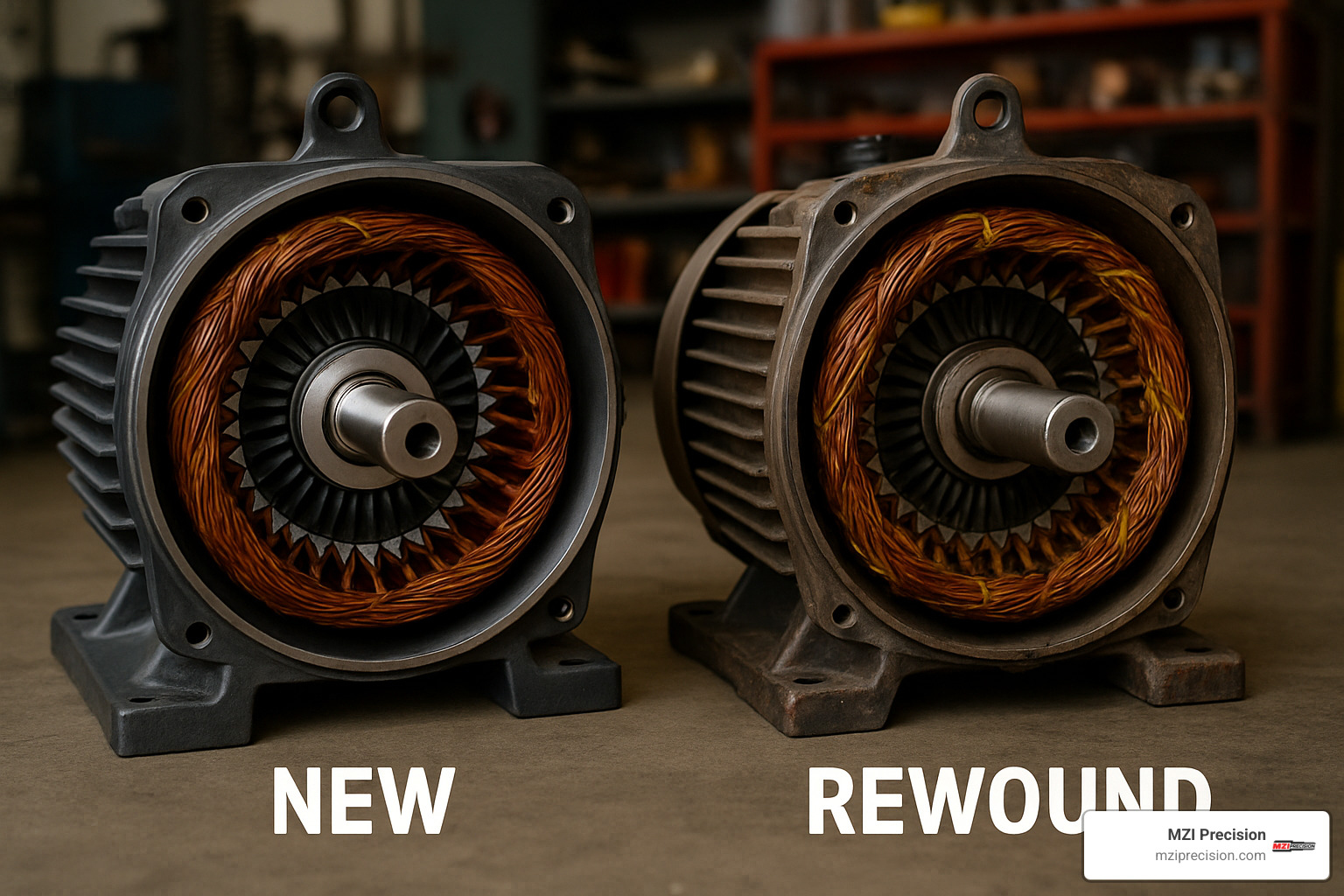
Inside the Workshop of Motor Rewind Specialists
Step into the workshop of a motor rewind specialist and you’ll find yourself in a fascinating world where old-school craftsmanship meets cutting-edge technology. These specialized spaces hum with activity as skilled technicians breathe new life into failed electric motors that most would consider beyond repair.
Step-by-Step Rewind Procedure
When a motor arrives for rewinding, it begins a carefully choreographed journey back to peak performance:
First comes the crucial data capture phase. Before touching a single bolt, technicians carefully document everything about the motor’s original design – the number of coils, turns per coil, wire gauge, connection patterns, insulation type, and precise physical dimensions. This electrical “fingerprint” serves as the blueprint for the entire repair.
Next, the careful dismantling and inspection begins. As one technician puts it, “We treat each motor like a puzzle that needs to be taken apart and put back together with absolute precision.”
The core testing phase follows, where specialists check if the stator laminations remain in good condition. “Core loss testing isn’t optional – it’s essential,” explains one veteran motor rewind specialist. “Without it, you might rewind a motor with damaged laminations and create an efficiency-draining money pit.”
The most dramatic part comes next: winding removal. Most shops use specialized burn-out ovens that reach temperatures between 700-750°F, hot enough to carbonize insulation without damaging the metal components.
“We use a burn-out oven to strip old insulation cleanly and protect stator packs during the removal process.” – Industry Expert
With the stator stripped clean, coil manufacturing begins. Using high-quality magnet wire and modern insulation materials, technicians create new coils that match the original specifications exactly.
The delicate process of insertion and lacing follows, with each coil carefully placed into the stator slots and secured with appropriate insulation. This step requires tremendous patience and skill – one misplaced coil can ruin the entire motor.
The rewound stator then undergoes insulation treatment via vacuum pressure impregnation (VPI) or submersion varnishing. Experienced technicians with 200+ years of combined experience take this step seriously: “We apply a two-step submersion varnishing process: heat, submerge, cure, then resubmerge to build a thick protective coat.”
After final assembly with fresh bearings and seals, comprehensive testing confirms the motor is ready to return to service.
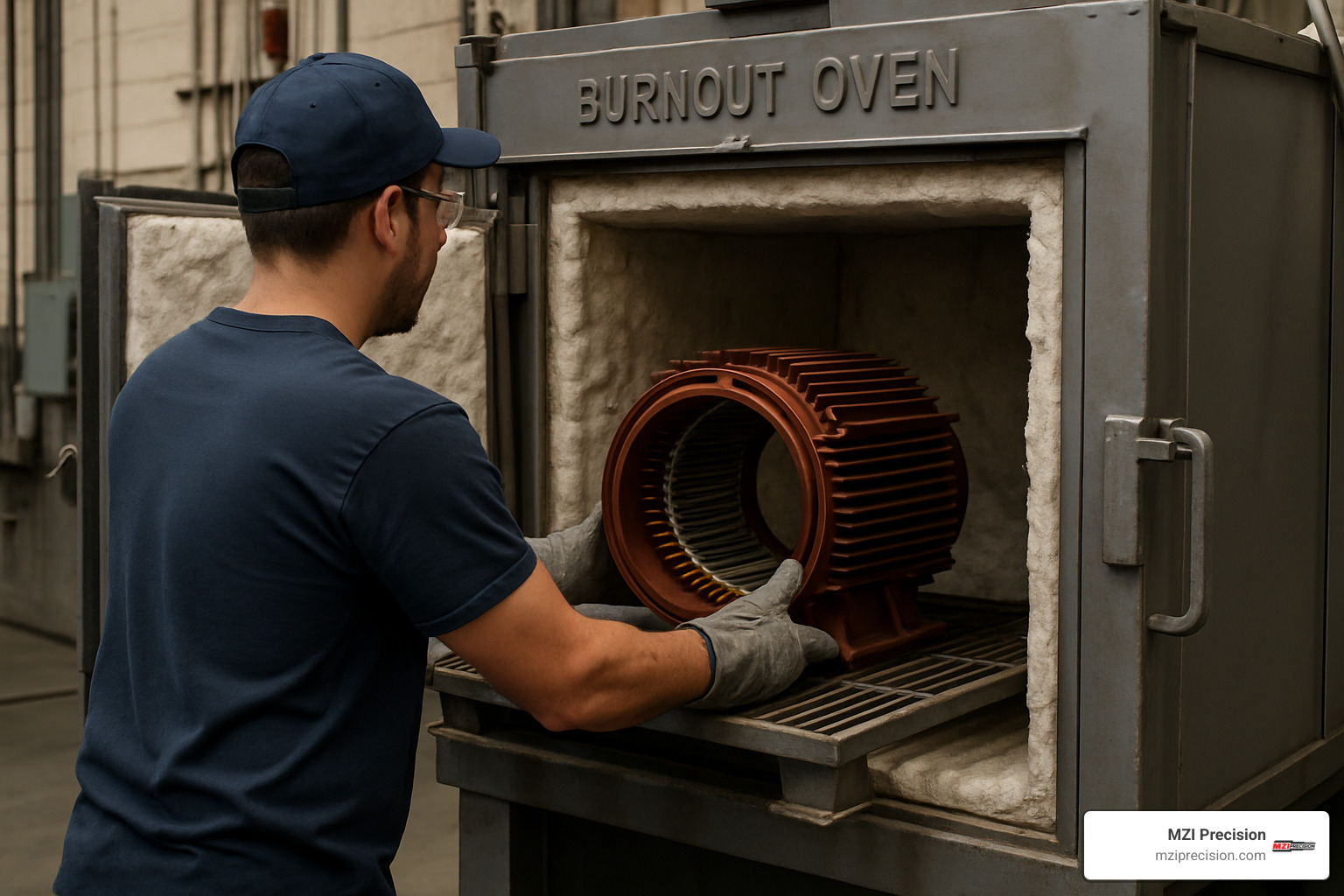
Testing & Quality Assurance Used by Motor Rewind Specialists
The difference between average and excellent motor rewind specialists often comes down to their testing protocols. The best shops test motors twice – before and after rewinding.
Pre-rewind testing includes surge testing to find weak spots in turn-to-turn insulation, core loss testing to check stator lamination health, polarization index measurements to assess insulation condition, and winding resistance checks to spot imbalances.
After rewinding, post-rewind testing becomes even more critical. High-potential (hi-pot) testing verifies insulation strength, while surge comparison testing confirms winding symmetry. No-load tests check for proper rotation and vibration patterns, with larger motors often undergoing full-load testing.
As industry experts proudly state, “All repair work is fully tested and a complete report is created with records logged and archived.” This attention to documentation provides valuable historical data for future maintenance.
Many top-tier shops maintain ISO 9001:2015 certification, demonstrating their commitment to consistent quality management. Quality-focused repair facilities have maintained this certification for decades – a testament to their longstanding dedication to excellence.
Performance Boosts & Tech Advancements
Modern motor rewind specialists don’t just restore motors – they often improve them. When your motor returns from a quality shop, it might actually perform better than it did when new.
Insulation upgrades are among the most common improvements. Replacing outdated Class B insulation (rated for 130°C) with modern Class H materials (rated for 180°C) significantly improves temperature tolerance and extends motor life.
Some specialists now use nano-modified wire with improved spike resistance for applications with high electrical stress. This technological advance wasn’t available when many older motors were originally manufactured.
Automated winding technology has revolutionized coil production. Computer-controlled winding machines ensure perfectly consistent coil tension and placement – something impossible to achieve with hand-winding techniques.
Experienced technicians explain their approach to upgrades: “We install double H Class slot liners and extra phase insulation to improve dielectric strength in severe duty applications.”
Advances in diagnostic equipment have also transformed the industry. Modern facilities now use “portable surge testers to diagnose winding issues on-site” and have transitioned “from varnish dipping to a higher temperature-rated epoxy for insulation.”

How to Choose Motor Rewind Specialists You Can Trust
Selecting the right motor rewind specialist is crucial for ensuring reliable motor performance and minimizing downtime. Here’s what to look for when evaluating potential partners:
Certifications Every Motor Rewind Specialist Should Hold
Reputable motor rewind specialists maintain industry certifications that demonstrate their commitment to quality and standards:
ISO 9001:2015: This certification verifies that the company follows a structured quality management system. Quality repair facilities maintain ISO 9001:2015 certification, ensuring consistent quality in their motor repair processes.
EASA Membership: The Electrical Apparatus Service Association (EASA) provides technical support, education, and industry standards. EASA members typically follow the association’s rewind standards that maintain or improve motor efficiency.
UL Certification: Some repair facilities are UL certified for specific repair procedures, providing additional quality assurance.
EX Repair Certification: For facilities that work with motors in hazardous environments, specialized certification for explosion-proof (EX) motor repairs is essential. Qualified technicians receive AEMT training for hazardous area motor repairs.
SKF Certified Rebuilder: This certification indicates expertise in bearing installation and motor rebuilding to OEM standards.
How Motor Rewind Specialists Minimize Downtime
Minimizing downtime is a critical factor when selecting a motor rewind specialist:
24-Hour Emergency Service: Quality service providers offer “a 24-hour motor rewind service for motors ranging from 1 kW up to 1000 kW, minimizing downtime for customers.”
Rush Service Options: Many specialists offer expedited service for critical equipment at an additional cost.
On-Site Diagnostics: Field service capabilities allow for immediate troubleshooting without removing the motor from your facility.
Pickup and Delivery: Free collection and delivery services streamline the repair process.
Detailed Reporting: Comprehensive documentation of the repair process helps with future maintenance planning and warranty claims.
Stocked Spares: Some specialists maintain an inventory of common motors and components for immediate replacement when rewinding isn’t feasible.
Quality repair facilities cover all motor repair work with an 18-month in-service warranty, exceeding the industry standard 12-month warranty, demonstrating confidence in their workmanship.
Added-Value Services to Look For
The best motor rewind specialists offer additional services that complement their core rewinding capabilities:
Laser Alignment: Precision alignment services ensure proper installation and minimize vibration.
Vibration Analysis: Predictive maintenance through vibration monitoring can identify potential failures before they occur.
Energy Efficiency Audits: Analysis of motor performance to identify opportunities for energy savings.
Gearbox Repair: Comprehensive mechanical services for complete drivetrain maintenance.
Controlled Storage: Climate-controlled storage for spare motors in “climate-controlled storage facilities with precision temperature/humidity management.”
Parts Supply: Access to OEM and aftermarket parts for various motor brands.
At MZI Precision, we understand the importance of comprehensive industrial maintenance services. While our focus is on precision spindle repair and rebuilding for manufacturing applications, we recognize the value of working with qualified motor rewind specialists when your industrial motors need attention.
Frequently Asked Questions about Motor Rewind Specialists
What motor types can be rewound—AC, DC, or servo?
One of the most common questions we hear is about which types of motors can actually be rewound. The good news is that skilled motor rewind specialists can handle virtually all major electric motor types you’ll encounter in industrial settings.
For standard AC motors—both the single-phase ones found in smaller equipment and the three-phase workhorses that power most industrial machinery—rewinding is routine work for experienced technicians. This includes your standard induction motors, synchronous motors, and even the more complex wound rotor designs.
DC motors aren’t left out either. Whether you’re dealing with shunt-wound, series-wound, compound, or permanent magnet DC motors, a qualified specialist can restore them to like-new condition through proper rewinding techniques.
Servo motors require a particularly delicate touch. As one specialist we spoke with put it, “Even the smallest mistake during a servo rewind can lead to failure.” These precision motors demand exacting standards due to their complex winding patterns and tight tolerances.
Beyond these common types, many specialists also tackle specialty motors like submersible pump motors, explosion-proof motors designed for hazardous environments, high-temperature motors, and motors with integrated brake systems.
Experienced motor repair professionals, with over 45 years in the business, proudly note they’ve been “repairing and rewinding motors and pumps up to 1,000HP,” which shows just how versatile professional rewinding services can be.
Does rewinding affect motor efficiency or lifespan?
This is perhaps the biggest concern we hear from manufacturing professionals considering motor rewinding. The short answer: when done correctly, rewinding should not reduce efficiency or shorten your motor’s life.
In fact, industry research confirms that “a properly planned and executed motor rewind will cause no efficiency loss in electric motors, and may even improve power density, reliability, and overall efficiency.” This is because today’s motor rewind specialists use modern materials and techniques that can sometimes outperform the original components.
As for lifespan, a properly rewound motor typically lives just as long as a new one. That’s why many reputable shops offer warranties ranging from 12-18 months on their work—comparable to what you’d get with a brand-new motor purchase. Quality repair services even back their motor repair work with an 18-month in-service warranty, exceeding the industry standard and demonstrating their confidence in the longevity of properly rewound motors.
What makes the difference between a good rewind and a poor one? Several critical factors:
– Thorough core testing before rewinding begins
– Maintaining the original winding patterns exactly
– Using same or better quality magnet wire
– Installing appropriate insulation systems
– Controlling burn-out temperatures to protect laminations
– Employing quality varnishing and impregnation processes
How long does a typical industrial rewind take?
When production is halted due to a failed motor, time is quite literally money. Turnaround time varies based on several factors, but here’s what you can typically expect:
For smaller motors under 50 HP, most motor rewind specialists can complete the job in 3-5 business days under normal circumstances. Medium-sized motors between 50-200 HP generally require 5-10 business days, while larger motors over 200 HP might need 10-15+ business days for a complete rewind.
When you’re facing a true emergency, many specialists offer expedited services. Quality service providers offer “a 24-hour motor rewind service for motors ranging from 1 kW up to 1000 kW.” Some shops even offer weekend and holiday service for those truly critical situations where every hour of downtime is devastating to production.
Several factors can affect how quickly your motor can be rewound, including the size and complexity of the motor, availability of the specific materials needed, whether additional repairs are required (like shaft or bearing work), the current workload at the shop, and any special testing requirements for your application.
For manufacturing operations where downtime costs thousands per hour, we strongly recommend establishing a relationship with a responsive motor rewind specialist before you have an emergency. Having that connection already in place can save precious time when a motor failure occurs.
Conclusion
The value of partnering with trusted motor rewind specialists goes far beyond simple repairs for industrial operations that depend on electric motors. When you work with skilled specialists, you’re investing in extended equipment life, lower operational costs, and significantly less downtime.
Throughout this guide, we’ve seen how motor rewinding delivers tangible benefits to your operation. You can expect cost savings of 40-60% compared to buying new motors, which makes a substantial difference to your maintenance budget. There’s also the environmental advantage – rewinding reuses valuable materials and reduces waste, aligning with sustainable manufacturing practices.
When done right, motor rewinding maintains or even improves efficiency. Using quality materials and expert workmanship extends motor life considerably, while emergency services and rapid turnarounds minimize costly production interruptions.
Finding the right motor rewind partner is crucial. Look for proper certifications, comprehensive testing capabilities, and a solid track record of quality service. The best specialists offer clear communication, detailed documentation of all work performed, and stand behind their services with meaningful warranties.
At MZI Precision, we focus on precision spindle repair and rebuilding for manufacturing applications across industries like aerospace, agriculture, automotive, defense/military, and solar energy. While spindles are our specialty, we understand how critical reliable motors are to your industrial operations. Our commitment to exceptional service extends to helping clients find the right solutions for all their precision equipment needs.
Choosing qualified motor rewind specialists isn’t just about fixing immediate problems—it’s a strategic investment in your operation’s long-term reliability, efficiency, and sustainability. The right partnership keeps your motors—and your production—running smoothly for years to come.
